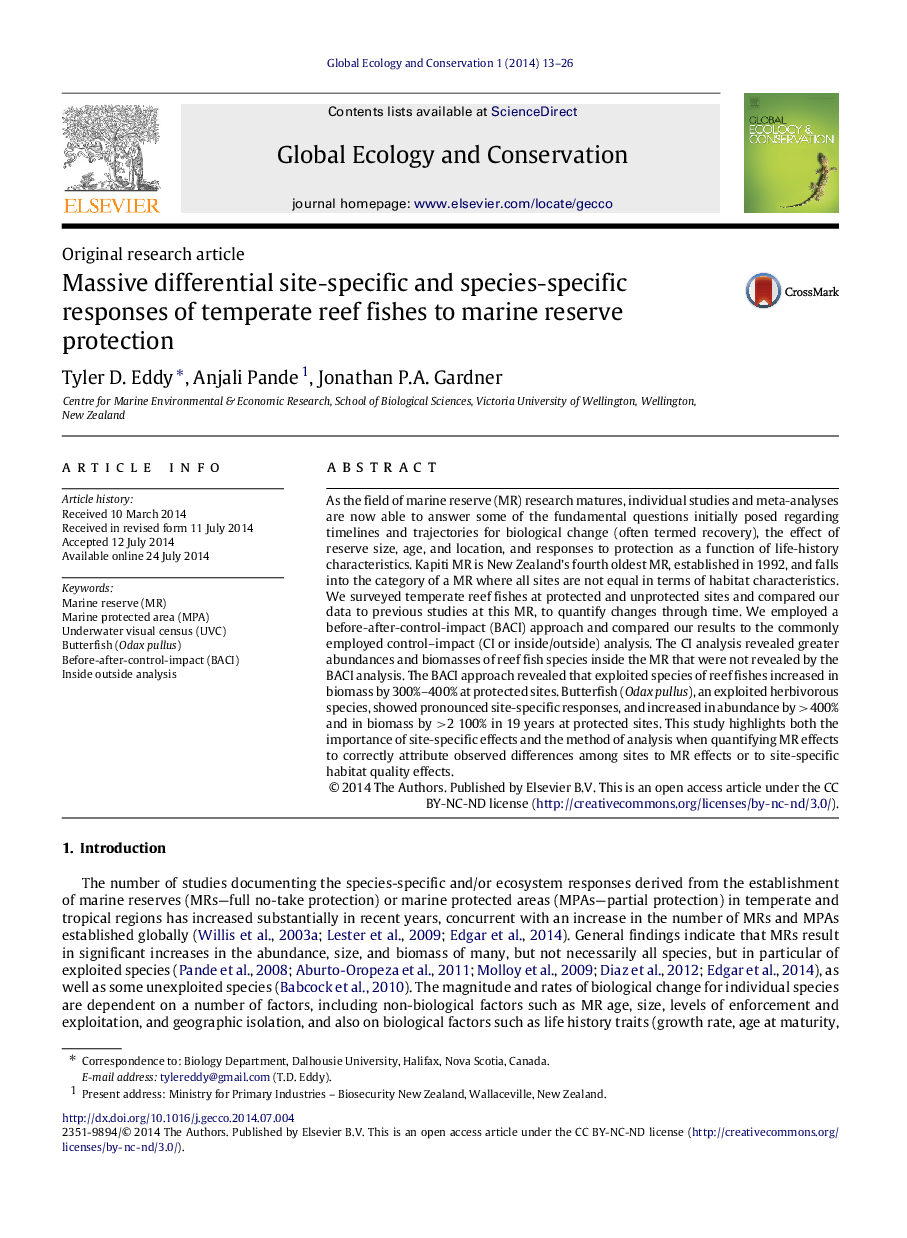| Article ID | Journal | Published Year | Pages | File Type |
|---|---|---|---|---|
| 4379543 | Global Ecology and Conservation | 2014 | 14 Pages |
As the field of marine reserve (MR) research matures, individual studies and meta-analyses are now able to answer some of the fundamental questions initially posed regarding timelines and trajectories for biological change (often termed recovery), the effect of reserve size, age, and location, and responses to protection as a function of life-history characteristics. Kapiti MR is New Zealand’s fourth oldest MR, established in 1992, and falls into the category of a MR where all sites are not equal in terms of habitat characteristics. We surveyed temperate reef fishes at protected and unprotected sites and compared our data to previous studies at this MR, to quantify changes through time. We employed a before-after-control-impact (BACI) approach and compared our results to the commonly employed control–impact (CI or inside/outside) analysis. The CI analysis revealed greater abundances and biomasses of reef fish species inside the MR that were not revealed by the BACI analysis. The BACI approach revealed that exploited species of reef fishes increased in biomass by 300%–400% at protected sites. Butterfish (Odax pullus ), an exploited herbivorous species, showed pronounced site-specific responses, and increased in abundance by >>400% and in biomass by >>2 100% in 19 years at protected sites. This study highlights both the importance of site-specific effects and the method of analysis when quantifying MR effects to correctly attribute observed differences among sites to MR effects or to site-specific habitat quality effects.
